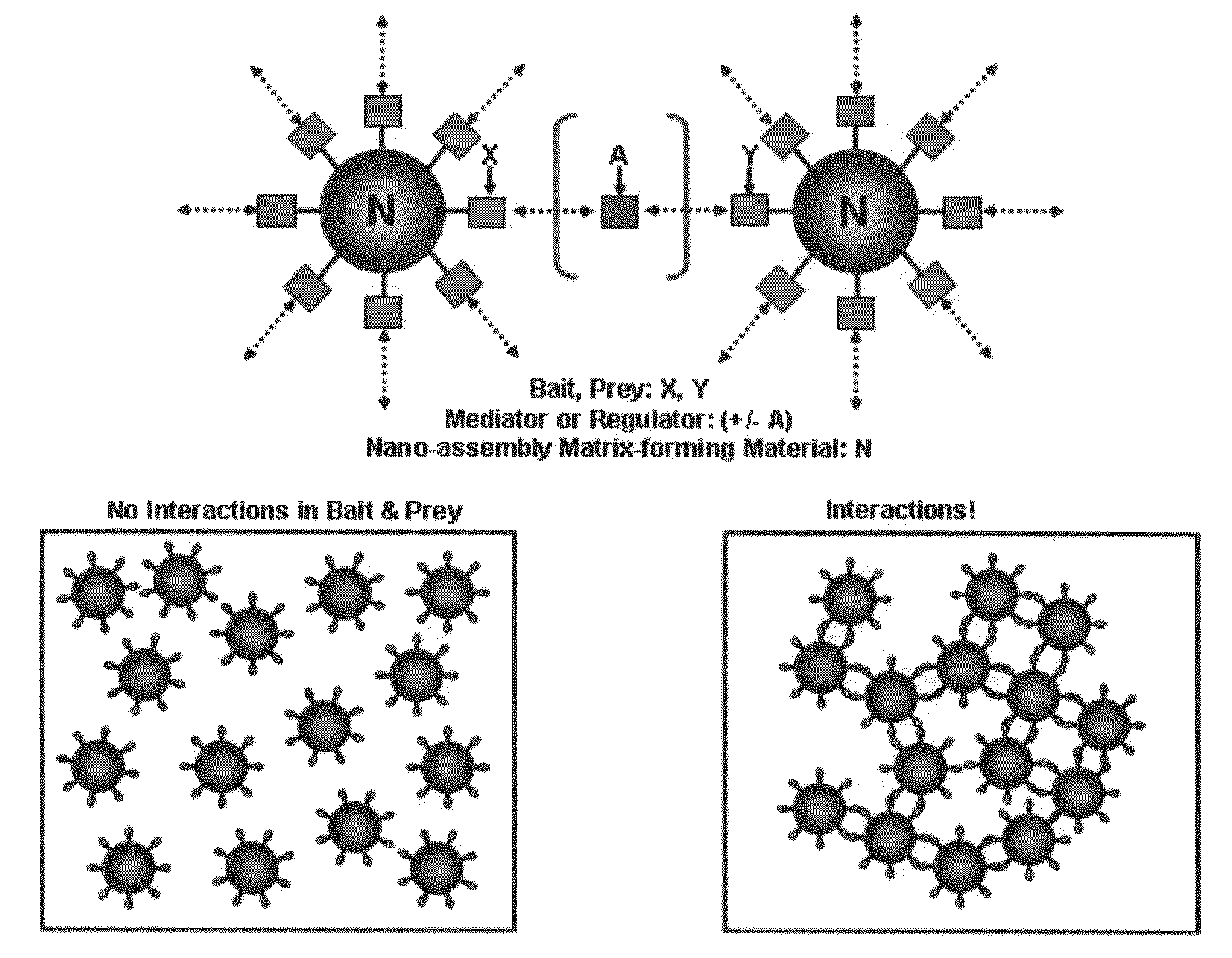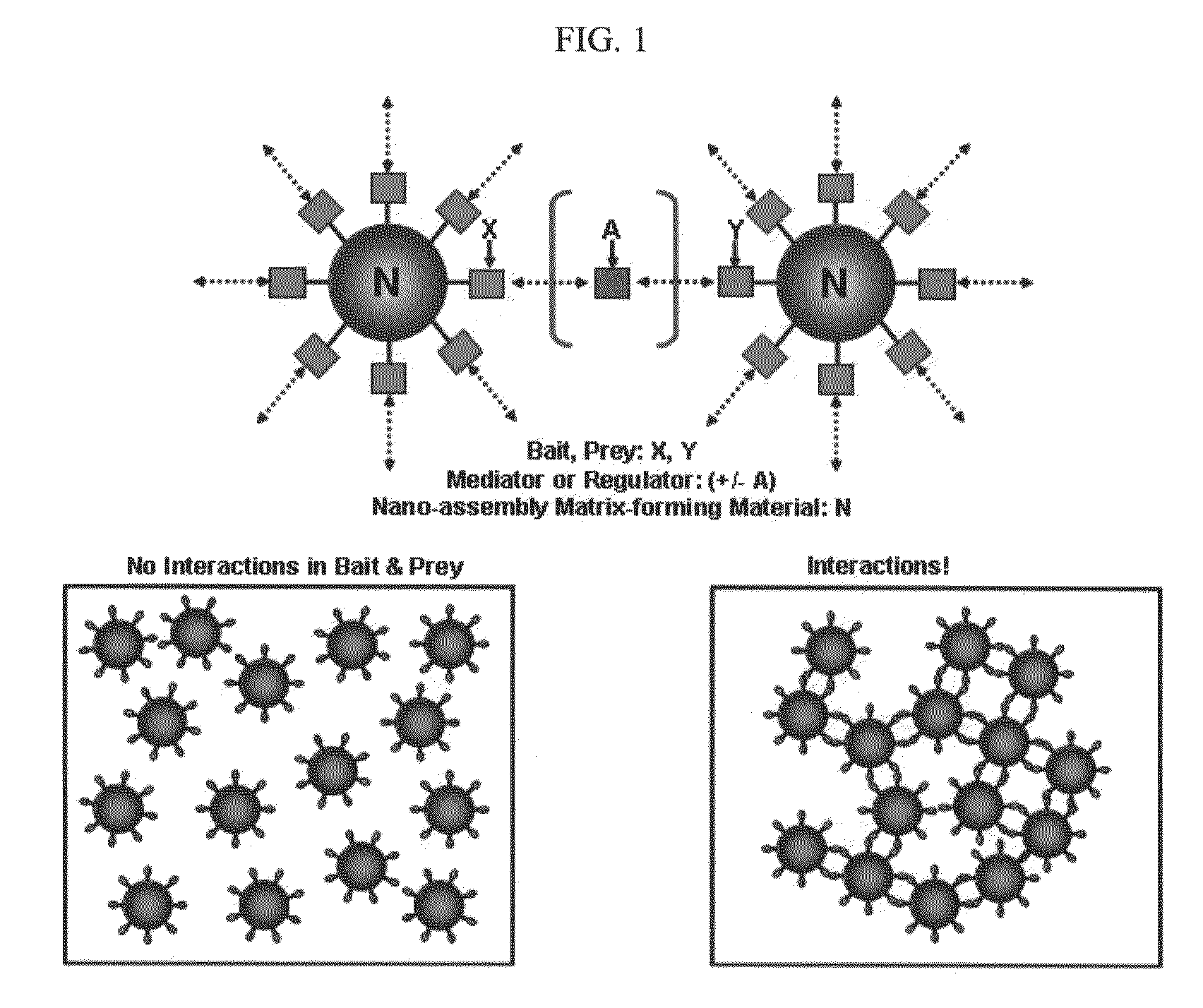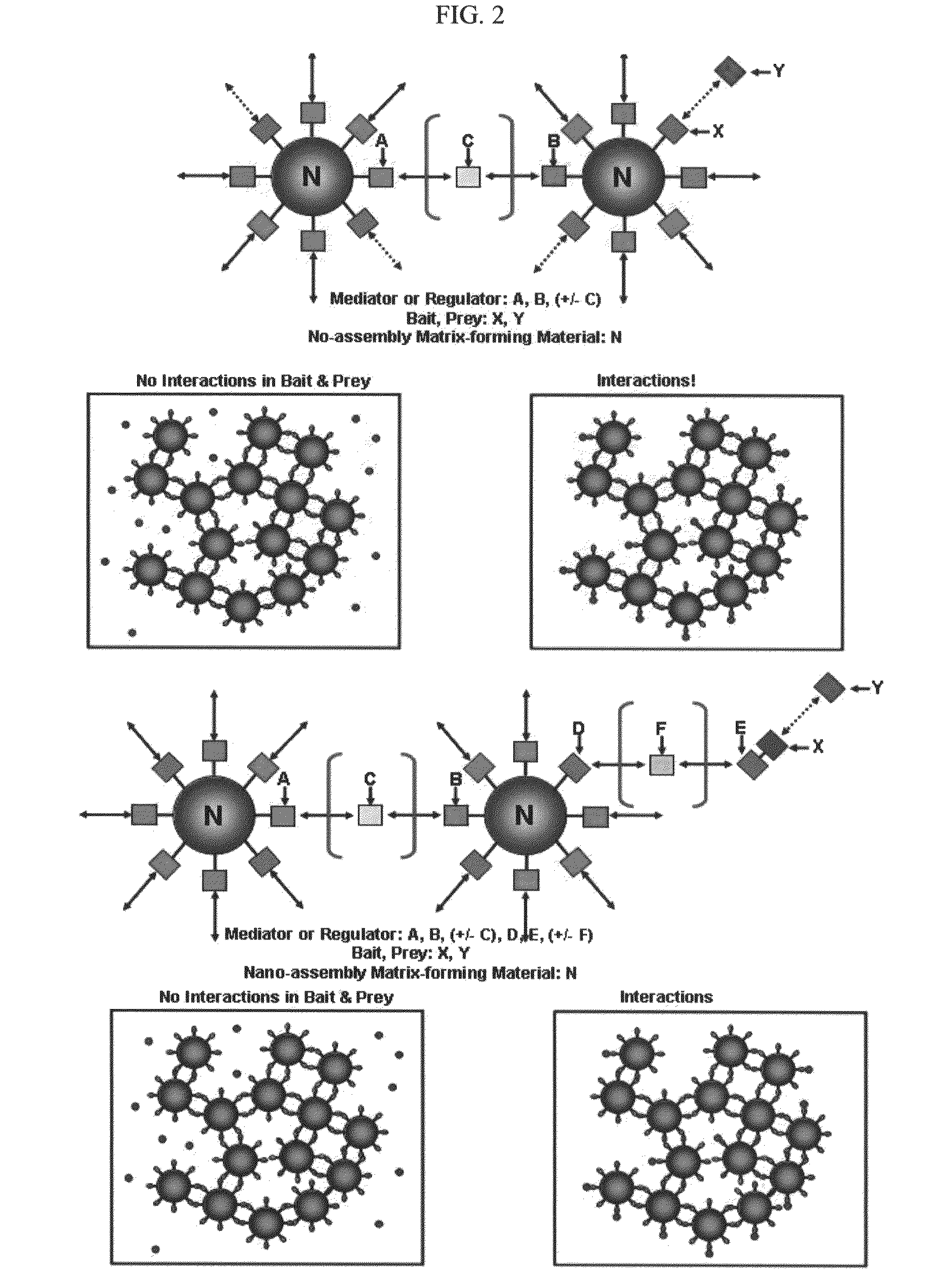The methods for detecting molecular interactions
- Summary
- Abstract
- Description
- Claims
- Application Information
AI Technical Summary
Benefits of technology
Problems solved by technology
Method used
Image
Examples
example 1
Formation of Nano-Assembly Matrices by Interaction Between Compound (Rapamycin) and Proteins (FKBP and FRB)
[0127]Ferritin gene FTH1 (GenBank BC013724) and FTL (GenBank BC016346) were purchased from Open BioSystems, Inc., USA.
[0128]In the present invention, various proteins were attached to the end of ferritin protein and used in analysis. pcDNA 3.1-based recombinant genes were prepared, which can express various fusion proteins, obtained by attaching various detection proteins (e.g., FKBP and FRB) and fluorescent proteins (e.g., mRFP, EGFP, ECFP and YFP) to the amino terminal ends of ferritin protein (FT), in mammalian cells by a CMV promoter.
[0129]The recombinant gene FKBP-mRFP-FT and FRB-mRFP-FT were introduced alone or together into previously cultured Hela cells (ATCC No. CCL-2) using electroporation (1000 V, 35 ms, 2 pulses). Then, the cells were plated in a 16-well chamber slide (Nunc) and cultured in a 5% CO2 incubator at 37° C. for 24 hours to express the fusion protein. For...
example 2
Formation of Nano-Assembly Matrix by Interaction Between Proteins
[0155]Whether a nano-assembly matrix is formed by the interaction between detection molecules IkBα and RelA in various ways (A, B and C) as shown in FIG. 15 was examined.
[0156](1) Method of “A” in FIG. 15
[0157]A test was carried out in order to examine a nano-assembly matrix can be spontaneously formed in cells through the expression of IkBα and RelA, when IkBα and RelA are fused directly to the ferritin protein.
[0158]The recombinant genes IkBα-YFP-FT (pcDNA 3.1) and RelA-mRFP-FT (pcDNA 3.1) were introduced into the Hela cells cultured in Example 1, and then the ferritin fusion protein was expressed in the cells. As a result, as shown in FIG. 16, a nano-assembly matrix was formed in the cells through the interaction between the IkBα and RelA proteins.
[0159](2) Method of “B” in FIG. 15
[0160]Each of the IkBα and FRB proteins was fused to ferritin, and the RelA protein was fused with FKBP. The fusion proteins were treated...
example 3
Formation of Nano-Assembly Matrix Through Interaction Between Proteins by Physiological Signal
[0170]A test was carried out in order to examine whether the interaction between proteins, which are regulated according to an external signal, can be analyzed. As a material that mediates (regulates) the interaction between the prey and the bait, an external signal was used.
[0171]The recombinant genes FRB-ECFP-FT, FKBP-mRFP-bTrCP and IkBα-YFP-FKBP were introduced together into Hela cells, and each of the fusion proteins was expressed in the cells. Although IkBα used in Example 2 always interacts with the RelA protein regardless of the external stimulation of cells, it interacts with the bTrCP protein, only when a physiological external signal of TNFa was transferred to cells. For this reason, cells were treated with TNFa.
[0172]As a result, as shown in FIG. 20, the IkBα and bTrCP proteins interacted with each other, and the FRB and FKBP proteins as mediator (regulator) materials interacted...
PUM
 Login to View More
Login to View More Abstract
Description
Claims
Application Information
 Login to View More
Login to View More - R&D
- Intellectual Property
- Life Sciences
- Materials
- Tech Scout
- Unparalleled Data Quality
- Higher Quality Content
- 60% Fewer Hallucinations
Browse by: Latest US Patents, China's latest patents, Technical Efficacy Thesaurus, Application Domain, Technology Topic, Popular Technical Reports.
© 2025 PatSnap. All rights reserved.Legal|Privacy policy|Modern Slavery Act Transparency Statement|Sitemap|About US| Contact US: help@patsnap.com



